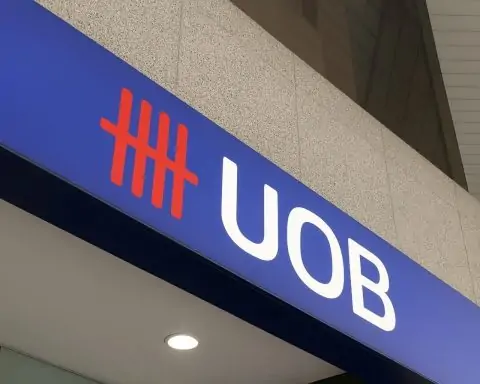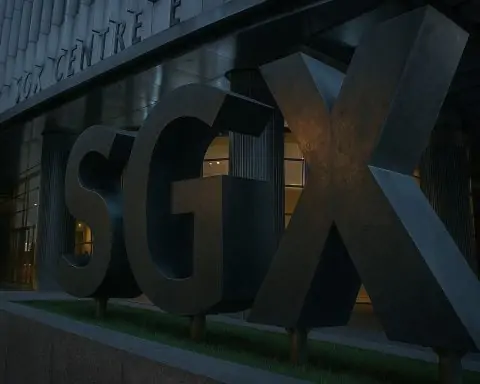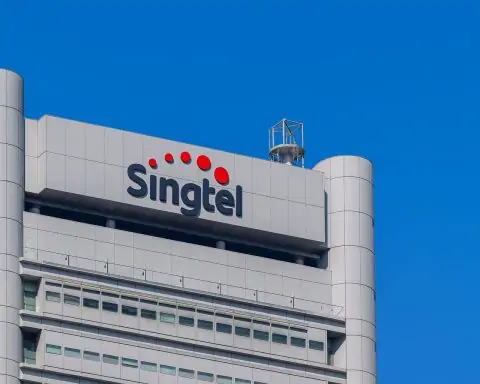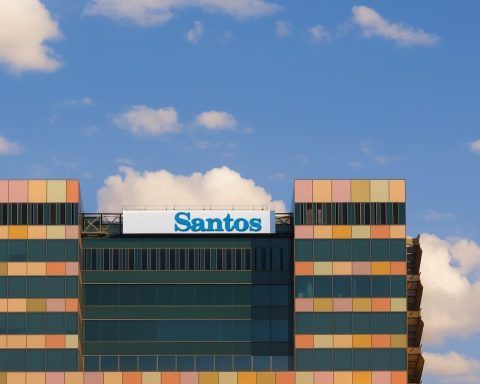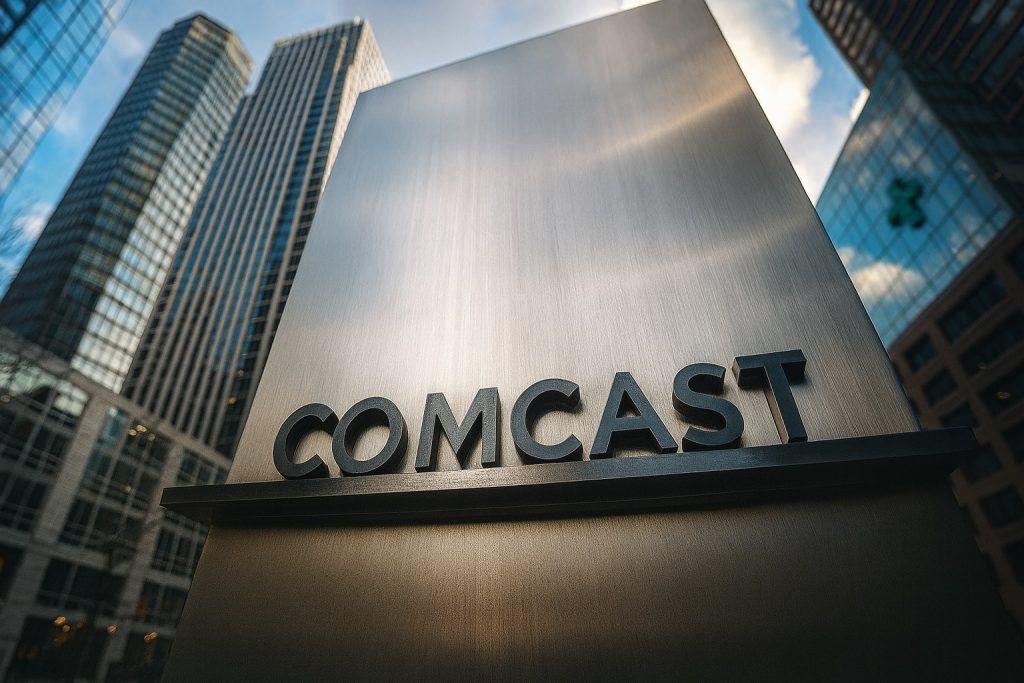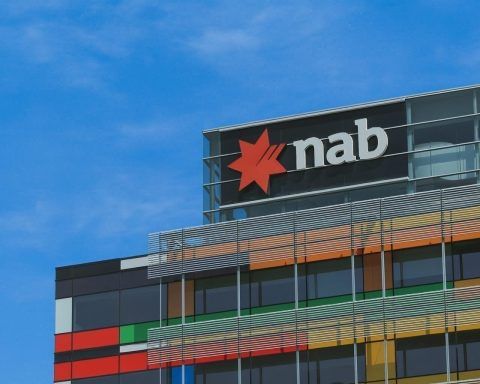- Trump-Xi Deals: Presidents Trump and Xi reached a one-year “truce” on tariffs and rare-earth exports. Trump called the Busan meeting “amazing,” saying U.S. tariffs on China will fall to 47% (down from 57%) after halving the 20% fentanyl-precursor tariff [1] [2]. China agreed to resume buying U.S. soybeans and pause its new rare-earth export curbs for a year [3] [4].
- Stock Market Action: U.S. stock futures slid slightly Thursday after earlier gains. By Thursday morning, Dow futures were down about 0.3–0.4%, with S&P and Nasdaq futures off ~0.2% [5] [6]. Wall Street had set records on Wednesday (Dow ~47,500, S&P ~6,850, Nasdaq ~23,500) but gave back early gains once Fed Chair Jerome Powell dampened rate-cut hopes [7] [8].
- Fed Policy: The Fed cut rates 25bp on Oct. 29 as expected, but Powell warned another cut “is not a foregone conclusion” [9] [10]. This warning pushed the 10-year Treasury yield toward ~4.10% [11] (up from ~4.06% Wed) and strengthened the dollar. With inflation cooling, markets still price in about a 25bp cut in December, but traders trimmed odds from ~90% to ~70% [12] [13].
- Tech Earnings: Big Tech had mixed results. Alphabet (Google) surged ~8% after reporting over $100 billion in sales [14]. By contrast, Microsoft and Meta disappointed, dropping ~2% and ~9% premarket [15]. Apple and Amazon report after the close; Apple’s stock has hit record highs (near $4 trillion market cap) on strong iPhone sales [16]. Nvidia briefly hit a $5 trillion valuation on Wednesday [17].
- Valuations & Sentiment: Valuations are rich. TS2.Tech notes the “Buffett Indicator” (market cap/GDP) is ~219% [18] – above the 200% level that historically signaled trouble. JPMorgan’s Jamie Dimon warns he’s “far more worried” about froth and a possible “significant correction” [19]. Nationwide’s Mark Hackett calls stretched valuations “the best argument for bears,” and Ameriprise’s Anthony Saglimbene cautions an unexpected “hiccup” could trigger a pullback [20].
- Investor Mood: Despite risks, many analysts remain cautiously bullish. So far ~87% of S&P companies have beaten Q3 earnings estimates [21]. Carson Group’s Ryan Detrick says it’s been a “spectacular start to earnings season…justifying the rally” [22]. But investors are “looking for confirmation that the trade truce holds,” notes Saxo’s Charu Chanana [23]. Scotiabank’s Chris Scicluna adds that a positive Trump/Xi outcome was already “in the price” and this meeting merely confirmed expectations [24].
Trump-Xi Meeting Yields Only a Temporary Truce
At the APEC summit in Busan on Thursday, Trump and Xi touted progress but agreed only to roll back recent trade escalations. Under their framework, Beijing will pause new controls on rare-earth minerals (vital for tech manufacturing) for one year, resume soybean purchases, and work to halt illicit fentanyl exports. In exchange, Trump said U.S. tariffs on Chinese imports will be cut to 47% of their original levels (by halving the 20% fentanyl precursor tariff to 10%) [25]. Trump hailed the talks as “amazing” and rated them “12” on a 10-point scale [26], but analysts note the deal stops short of addressing deeper issues (China’s industrial policies, overcapacity, etc.) [27]. As Reuters observes, it amounts to a “fragile truce” rather than a lasting reset [28]. Emily Kilcrease of the Center for a New American Security calls it merely “de-escalation of measures that both sides have taken” since the trade war began [29]. Bloomberg concurs that the agreements essentially unwind recent punitive steps (pausing rare-earth curbs, halving fentanyl tariffs, etc.) while promising talks on other fronts (like TikTok restrictions) [30].
Market Reaction: Near-Record Highs and a Pullback
U.S. stock indexes had been perched at new highs entering Thursday. On Wednesday, the Dow briefly topped 47,600, the S&P 500 neared 6,900, and the Nasdaq was at fresh peaks – buoyed by cooling inflation and Fed easing bets [31] [32]. But the Trump-Xi meeting and Powell’s dovish caution capped gains. By Thursday morning, Dow futures were down roughly 0.3–0.4% and S&P/Nasdaq futures off ~0.2% [33] [34]. In European trading, the STOXX 600 fell ~0.5% on the day [35].
U.S. indexes ended mixed on Wednesday [36] and drifted modestly lower on Thursday. The Dow Jones was roughly flat (+0.1%) and the S&P 500 inched up about 0.2%, while the Nasdaq edged +0.4% by mid-afternoon [37] [38]. (Exact closing numbers: Dow ~47,500, S&P ~6,820, Nasdaq ~23,700 – all near recent records.) Safe-havens gave back ground: gold dipped below $4,000/oz [39], and the dollar firmed (the USD Index near two-week highs) [40]. By contrast, commodity prices tied to trade optimism moved up – e.g. soybeans rallied on the soybean-buying deal [41]. Notably, shares of U.S. rare-earth miners jumped after China agreed to delay its export curbs. Stocks like Critical Metals and USA Rare Earth spiked 5–7% on the news [42].
Fed Outlook and Economic Data
The Federal Reserve cut rates by 25 basis points on Oct. 29 as widely expected, trimming its target range to 3.75–4.00%. But Chair Powell’s press conference cooled bets on further easing. He emphasized that another cut in December “is not a foregone conclusion” [43]. This caution pushed U.S. Treasury yields higher (the 10-year yield rose above 4.10%) [44] and dented Treasury futures. Money markets trimmed the odds of a December cut from near 90% on Wednesday to roughly 70% by Thursday [45].
Data remains light this week due to a partial government shutdown, leaving markets “flying blind” on the economy [46]. The modestly softer September CPI – which helped set those records – suggests inflation pressures are easing. The market consensus still expects a further rate cut by December [47] [48], but officials now signal a more patient stance. “If we don’t get more data, we need to price out what was a near-certainty of a cut in December,” warned DoubleLine’s Jeffrey Gundlach on CNBC [49], noting he assigns only ~50% odds to that cut now.
Big Tech Earnings in the Spotlight
Earnings season is a key driver this week. Alphabet (Google) stunned investors with blowout results: sales exceeded $100 billion and every segment grew, sending GOOG stock up roughly 8% pre-market [50]. In turn the Nasdaq rallied on Wednesday. But Facebook-parent Meta and Microsoft both fell on cautious forecasts: Meta’s shares plunged ~9% premarket, and Microsoft slid ~2% [51]. (Meta reported a one-time $16 billion tax charge that crushed profits [52].) Amazon and Apple report after Thursday’s close; Google-parent Alphabet, Meta and Microsoft did so Wednesday. Apple has been especially strong, lifting its market cap above $4 trillion on robust iPhone 17 sales, though some investors note recent guidance has tempered enthusiasm [53]. Pre-market Thursday, Apple shares were about +0.5%, Amazon -1% [54].
Nvidia’s gigantic rally continued: the chipmaker briefly became the first $5 trillion company on Wednesday [55], reflecting feverish AI demand. Other techs saw big moves too: work-from-home names like Zoom and cybersecurity stocks surged, while data-center equipment makers rose on cloud spending forecasts. Outside tech, industrials and consumer stocks also saw gains; for example, Caterpillar jumped over 11% on strong results [56]. Overall, market breadth is relatively healthy: even the Russell 2000 small-cap index has been rallying in recent weeks [57].
Expert Commentary and Outlook
Financial experts remain split on the rally’s sustainability. On the bullish side, many point to strong fundamentals: 87% of S&P companies beat Q3 earnings estimates so far, fueling “a spectacular start to earnings season” according to Ryan Detrick of Carson Group [58]. Economist Charu Chanana (Saxo) notes that investors are “content with the U.S.-China momentum,” dismissing noisy tariff headlines as theatrics [59]. Mitsui analyst George Boubouras observes that fading trade-war fear has “fueled risk-taking,” with money rotating from bonds and gold into stocks [60].
Caution comes from valuation and policy risks. JPMorgan’s Jamie Dimon has been outspoken: he’s “far more worried” about speculative froth and “the possibility of a significant correction” [61]. TS2.Tech highlights that the famed Buffett Indicator (stock market cap/GDP) is ~219% [62] — above the historical ~200% crash-warning threshold. The IMF and Bank of England have also warned that AI-driven tech valuations look stretched, “ripe for a sharp reversal” if growth slows [63]. Nationwide’s Mark Hackett terms current valuations “the best argument for bears,” while analysts like Anthony Saglimbene of Ameriprise caution that an unexpected “hiccup” (geopolitical or macro) could spark a pullback [64]. Even the robust Fed meetings have left officials uneasy about data: Scotiabank’s Chris Scicluna notes the FOMC is “hesitant” about more cuts “when we have this evident froth in stocks and a boom in AI which certainly has legs running into 2026” [65].
In short, Wall Street is upbeat but watchful. The Trump-Xi truce has eased trade jitters, and with Fed cuts likely ahead, “easy money” looks set to support stocks in the near term [66]. But many strategists say the upside may be narrow now, focused on winners (tech and AI plays) while under-the-radar bubbles could burst. “We’re not at a bubble stage yet,” argues investor Eric Schiffer [67], but others remind us that markets have historically fallen sharply when momentum overshoots fundamentals. For now, traders will be glued to tonight’s Apple/Amazon results, tomorrow’s ISM data and any sign that U.S.-China tensions could flare again. As one dealer quipped, the meeting was “in the price” – now investors need concrete follow-through to sustain the rally [68] [69].
Sources: Author’s analysis and reporting from Reuters, TS2.Tech, Investopedia, Bloomberg and CNBC [70] [71] [72] [73] [74] [75]. Stock index and market data are as of Oct. 30, 2025.
References
1. www.reuters.com, 2. www.bloomberg.com, 3. www.reuters.com, 4. www.bloomberg.com, 5. www.investopedia.com, 6. ts2.tech, 7. ts2.tech, 8. www.investopedia.com, 9. www.investopedia.com, 10. ts2.tech, 11. www.investopedia.com, 12. www.reuters.com, 13. www.investopedia.com, 14. www.investopedia.com, 15. www.investopedia.com, 16. www.investopedia.com, 17. www.investopedia.com, 18. ts2.tech, 19. ts2.tech, 20. ts2.tech, 21. ts2.tech, 22. ts2.tech, 23. ts2.tech, 24. www.reuters.com, 25. www.reuters.com, 26. www.reuters.com, 27. www.reuters.com, 28. www.reuters.com, 29. www.reuters.com, 30. www.bloomberg.com, 31. ts2.tech, 32. www.investopedia.com, 33. www.investopedia.com, 34. ts2.tech, 35. www.reuters.com, 36. www.investopedia.com, 37. www.reuters.com, 38. www.investopedia.com, 39. www.investopedia.com, 40. www.reuters.com, 41. ts2.tech, 42. ts2.tech, 43. www.investopedia.com, 44. www.investopedia.com, 45. www.reuters.com, 46. ts2.tech, 47. ts2.tech, 48. www.investopedia.com, 49. www.investopedia.com, 50. www.investopedia.com, 51. www.investopedia.com, 52. www.investopedia.com, 53. www.investopedia.com, 54. www.investopedia.com, 55. www.investopedia.com, 56. www.investopedia.com, 57. ts2.tech, 58. ts2.tech, 59. ts2.tech, 60. ts2.tech, 61. ts2.tech, 62. ts2.tech, 63. ts2.tech, 64. ts2.tech, 65. www.reuters.com, 66. ts2.tech, 67. ts2.tech, 68. www.reuters.com, 69. ts2.tech, 70. www.reuters.com, 71. ts2.tech, 72. www.reuters.com, 73. ts2.tech, 74. www.investopedia.com, 75. www.investopedia.com

